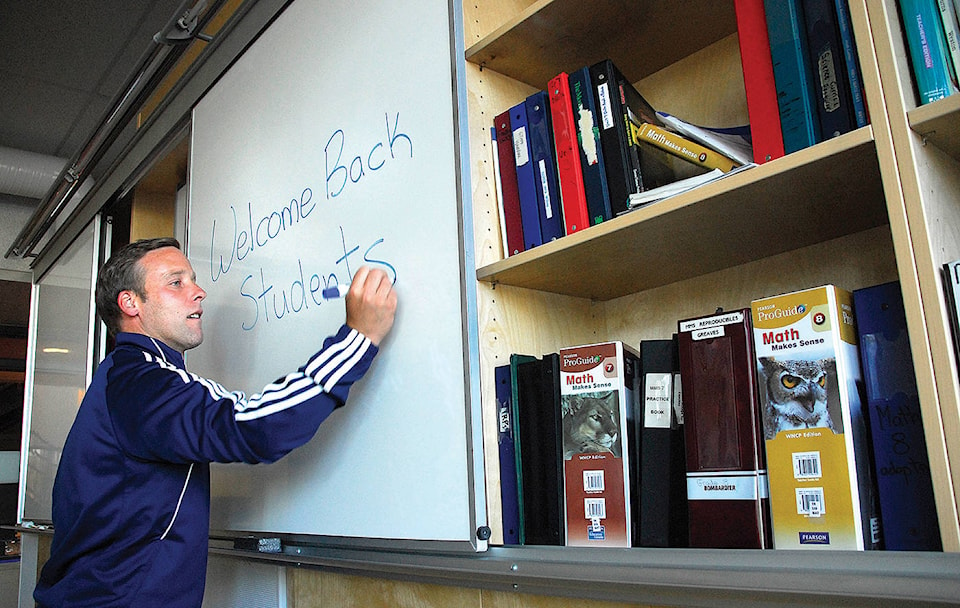Facing close to a $1 million deficit in its annual budget and the prospect of having to lay off 11 teachers, School District 63 (Saanich) is expected to put off approving its 2017/18 financial plan until they can meet with a new provincial government.
The school district is anticipating a shortfall of $953,000 this year – and the possibility of layoffs - due to a variety of reasons, not the least of which are impacts caused by the Supreme Court ruling on teacher contracts.
While the District is expected to receive Classroom Enhancement Funding (CEF) from the province of around $4.6 million to comply with the court ruling, the board of trustees says it’s having an impact on other areas of the school’s district’s operation.
“We’re not really going to go to the province and ask for more money,” says Board of Education Vice-Chair Elsie McMurphy. “But the extra space requirements have created a need for portables at some of our schools.”
The court decision outlined maximum class sizes and that in turn created the need for up to 30 new teachers in the District, McMurphy explained. To accommodate that, she said some schools in the southern portion of the District – namely Claremont Secondary and Royal Oak – will require portables, as there’s not enough physical space in the schools. In the north area of the District, she said schools like North Saanich Middle and Kelset Elementary are heavily populated, but may not require portables yet.
In a briefing note to the board members, District Secretary-Treasurer Jason Reid outlined the financial pressures. Those include inflationary costs of $445,000 (including $250,000 in increases to group medical and dental rates), $113,000 in case enrolment is higher than anticipated and the forecast of a $395,000 surplus depletion and the staff’s desire to ensure the District has a surplus on hand.
To make up that overall deficit, Reid offered the board some options, from reducing an already vacant administration position, to monetary and staffing reductions among education assistants.
We are trying to desperately avoid that,” McMurphy said.
Seven of the potential teacher layoffs could come among the District’s education support teachers, who work with students with identified special needs. McMurphy said the impact of that decision cannot be understated, as the number of special needs students in the District has grown from around 1650 from a few years ago when there were a total of 8,000 students in the system – to today, with more than 760 special needs students in a population of 7,000.
“It gives you an idea of how our student population is changing,” she said, adding parents have told the board they loathe the loss of those support teachers.
There was some discussion about the District’s International Student Program, which generates close to $1 million in revenue. McMurphy said that program has put money into the District, enabling them to afford things they might not otherwise, especially in times of declining enrolment. She as the District has signed contracts with international students for the next school year, dropping the program is unlikely.
During the 2016/17 school year, McMurphy said the province came up with extra money to help offset their deficit at that time.
This year, she said she doesn’t know what will happen, especially since there’s a provincial election this month.
She said she expects the board will vote to postpone their budget talks until they meet with a new government after the election.
School Districts have until June 30 to submit balanced budgets to the Ministry of Education.
